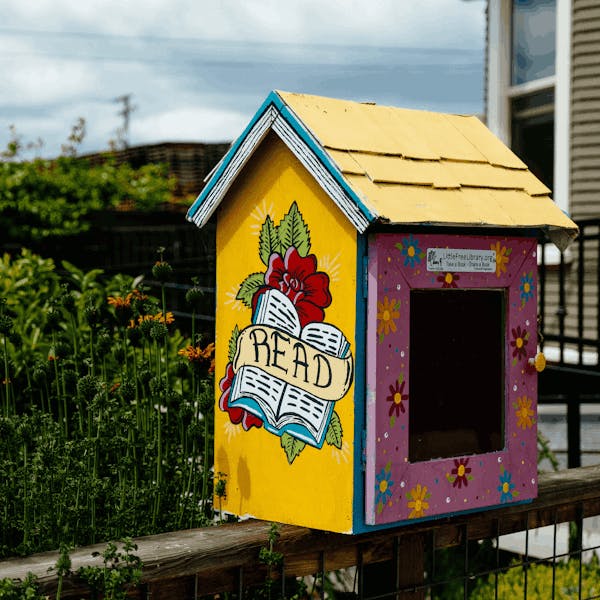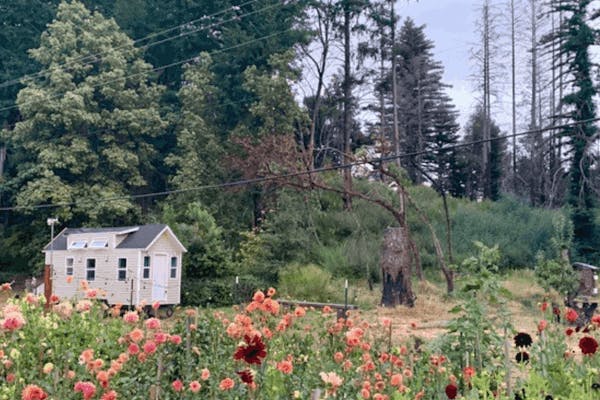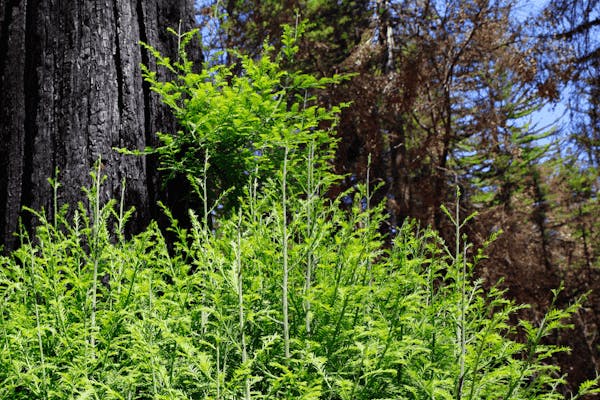Act Now
This giving season presents a unique opportunity to strengthen the place we call home. And this year, there's added reason to act.
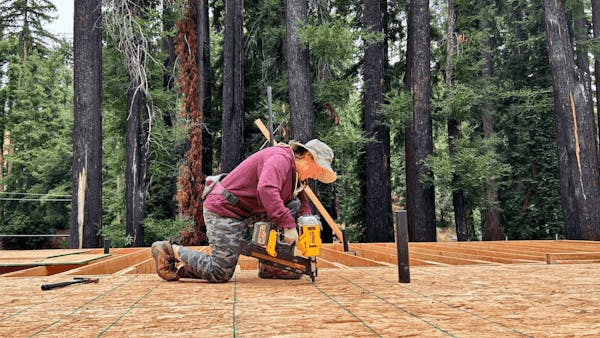
CZU Fire Recovery Update
Five Years Strong
A version of this article was published in Good Times Santa Cruz.
The morning sun beams between the charred trunks of redwood trees towering over a work site on Rambling Road, deep in the Riverside Grove neighborhood of Boulder Creek. Hammers pound and saws slice as volunteers begin erecting wood framing over the recently poured concrete foundation for what will be Tonia Weakland’s new home. Almost five years ago, the cabin that had been in her family for decades burned to the ground in the CZU Lightning Complex Fire that tore through the area in late August 2020. Her neighborhood had been one of the first to be evacuated, and the home was gone within the first days of the inferno’s monthlong siege.
No one was home at the time the evacuation orders came down, and Weakland was unable to save any of her family’s belongings or heirlooms. Since then, the single mother of two has been renting an apartment in Santa Cruz— all the while holding out hope that someday she would rebuild.
Now, that “someday” has finally arrived. The project broke ground just a few weeks ago with the help of volunteers from the Santa Cruz County Long-Term Recovery Group (SCCLTRG) and Habitat for Humanity Monterey Bay.
“The last five years have been so damn hard,” Weakland says. “I’m so grateful to get the help with the rebuild.”
As the five-year anniversary approaches, these and other organizations are helping residents like Weakland rebuild as part of the locally led recovery and rebuilding efforts that have coalesced in the wake of the CZU fire. They are working alongside county officials and partner organizations to bolster both the immediate response and lasting recovery efforts after disasters.
The CZU Lightning Complex Fire blazed from August 16 to September 22, 2020. It was among the 650 wildfires that scorched over 2 million acres in Northern California due to dry lightning strikes. It displaced over 60,000 residents, burned more than 86,500 acres and razed almost 1,500 structures, including 911 homes.
Tonje Switzer’s home in Bonny Doon was lost in the flames. At the time, she was the Operations Manager for the Family Resource Collective run by county nonprofit Community Bridges. She was living what many others in her community were experiencing, and it informed her advocacy for fire victims.
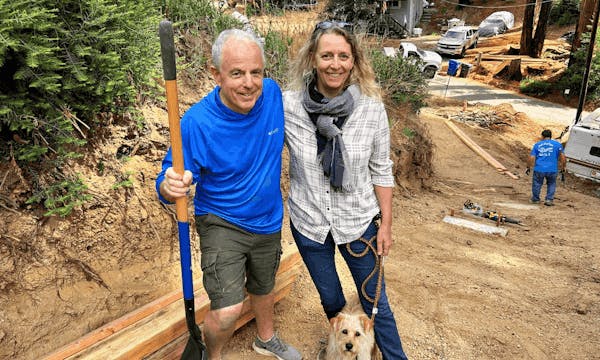
“We were personally impacted. Our house burned down in Bonny Doon, so that was my entry point, really, into that work,” Switzer says.
Switzer is now the Executive Director of the SCCLTRG. Formed in late 2020, it was created as a collaboration of agencies and organizations that coordinated recovery services for CZU Fire victims. In 2023, the organization obtained nonprofit status to formalize their efforts. They work with the county’s Office of Response, Recovery and Resilience (OR3), which was also formed in the wake of CZU. Partner organizations include Community Foundation Santa Cruz County, Catholic Charities Monterey Bay, Community Bridges, Habitat for Humanity, and Valley Churches United. Representatives of these organizations form part of SCCLTRG’s Unmet Needs Committee, which identifies residents still needing assistance with recovery.
To this day, CZU victims are still grappling with permitting and other issues stopping them from rebuilding, and the SCCLTRG is continuing to show up.
“It's my community; talking to my neighbors, being aware of the people that live here that still haven't been able to recover, and why, has allowed me to also be an advocate in the community. And sort of bridge that gap between the community and the county,” Switzer says.
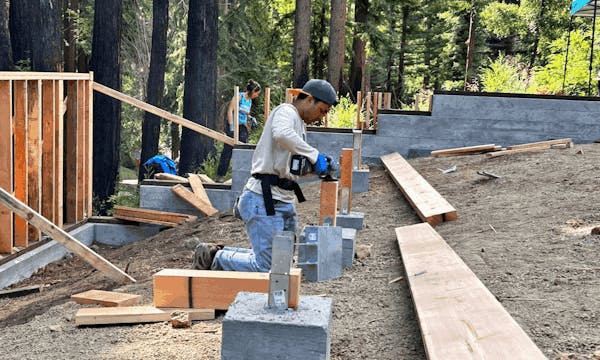
The county’s permitting process has been a major roadblock and despite years of promises to “streamline” processes, residents continue to have issues. But county officials—including a recently elected supervisor—have been pushing to fix the problems, working to get residents back in their homes and better prepare for the next disaster.
Changing The Culture
Santa Cruz County Fifth District Supervisor Monica Martinez remembers evacuating from her Felton home as the CZU fire raged that August 2020 and being concerned about not only her, but her neighbors’ homes as well.
At the time, Martinez was the CEO of healthcare nonprofit Encompass Community Services, which was now responding to the aftermath of the fire on top of the ongoing Covid-19 pandemic response. Luckily, her home was spared, but many of her neighbors lost theirs.
Martinez saw the difficulties they faced as they embarked a rebuilding process mired by red tape, and decided to run or the fifth district seat, winning in November 2024.
“To rebuild in the Santa Cruz Mountains is incredibly difficult, and our county didn't have the process or the infrastructure or the support it needed to expedite the rebuilding process at the time. There were really outdated systems and protocols in our (county) planning department that became barriers,” Martinez says.
The county began tracking the pace of recovery in February 2022 with the CZU Fire Recovery Permit Center Dashboard. As of this writing, the dashboard shows 155 single family homes rebuilt in the CZU fire area, with outstanding permits for another 142 dwellings. Less than a third of the total lost homes have rebuilt five years on.
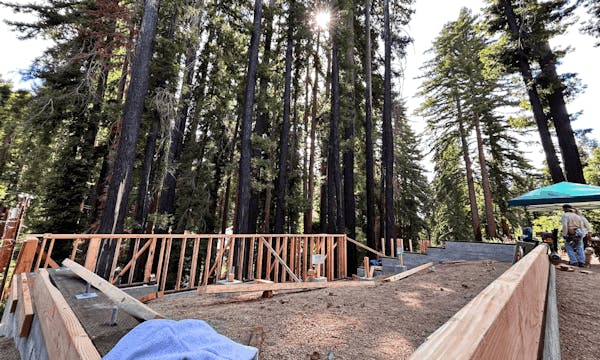
David Reid, the director of OR3, acknowledges residents’ frustration and says that the county has been working to streamline processes where it can, but that rebuild timelines are unique to each case, and certain regulatory requirements like geological surveys and septic system designs can’t be skirted.
“All of these things [...] can make recovery harder, and yet, there's not a lot the county can do to streamline those things or make them go away,” Reid says.
Despite these efforts by the county, Tonia Weakland is still skeptical.
“I think there needs to be more of a consolidated effort to make rebuilding more affordable.”
Many residents were underinsured for fire damage, with payouts not being enough to cover rebuilds. Weakland says she had a $250,000 policy on her home, less than the estimated $400,000 cost to rebuild. The federal response was also a challenge for residents, as the Federal Emergency Management Agency (FEMA). Weakland says that she, like many was denied FEMA assistance because she already had some form of fire protection insurance.
In response, disaster recovery is being supported by a community-built safety net.
Local Safety Net
Erin Shiroda is a Disaster Case Manager for Catholic Charities Monterey. She’s seen her clients go through the “grueling” permitting process to rebuild. But despite that, she sees a community coming together.
“We've seen the strength of our community up in the SLV area. It's been really amazing to see people come together to recover; the neighbors help each other; and all the different partner organizations that are involved,” Shiroda says.
In the immediate aftermath, Valley Churches United, which, like the Community Foundation, was born out the 1982 storm disaster, responded with their grassroots fundraising. But there was still a gap in funding needed for the ongoing response. These efforts are primarily supported by the Community Foundation’s Fire Fund. The fund, a consolidation of multiple fire response funds, has provided over $7 million in assistance driven by over 7,000 individual donors. This money has been used to see CZU survivors through various stages of their recovery journey, including rebuilding.
As the five-year anniversary approaches, the Unmet Needs Committee still has about 30 active CZU cases.
Community Foundation CEO Susan True says that the relationships her organization had built with other nonprofits during the Covid pandemic response helped lay the ground for the coordinated local response to CZU. At the end of the day, it’s these efforts that the community relies on. True is also part of the Unmet Needs Committee and to this day, she is still reviewing cases for referral on a weekly basis.
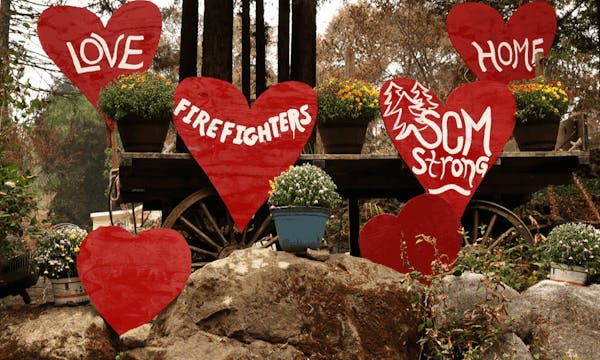
“Our neighbors rely on us both for the early and for the enduring response. After the TV cameras leave It's us that's left, and that's just the way it is. This community has continued to give to help their neighbors recover and we are responsible for making sure those dollars go to help people rebuild their lives,” True says.
County officials also recognize the importance of partnering with local organizations that provide additional support for the community.
“What the Long-Term Recovery Group and the philanthropy support through the Community Foundation has been able to do is to support closing that gap for community members and getting more people in through their new front door. And I think the importance of that work cannot be understated,” Reid says.” I think it’s one of the greatest learnings and successes of the aftermath of the CZU.”
Martinez says,” Through local philanthropy, donors can contribute to alleviating the burden of disaster costs for their neighbors. Having the Community Foundation serve as a connection between those who weren't as immediately impacted by the disaster and those who were is incredibly helpful.”

Back at Tonia Weakland’s rebuild site, SCCLTRG project manager Dylan Childs is leading the all-volunteer work crew, which is saving her the high cost of labor.
“The struggle is to be underinsured and to be able to afford to rebuild with the new regulations [...]; out here it’s most of everybody's budget. On projects like this, we're able to save close to $200,000,” Childs says.

Lydia Morgan is volunteering with SCCLTRG through AmeriCorps.
“It's beautiful to see the reaction from our clients, like when they see that we're breaking ground. I think it's a very emotional thing for them. It's been almost five years, and I think for them to finally see progress is just very validating and very important, and to be a part of that is super fulfilling.” she says.
“If there's any silver lining around it, certainly I'm much more connected to my community and my neighbors now than I was before.”
Header photo: Tonia Weakland begins to construct her new home from the ground up with the help of local volunteers.
